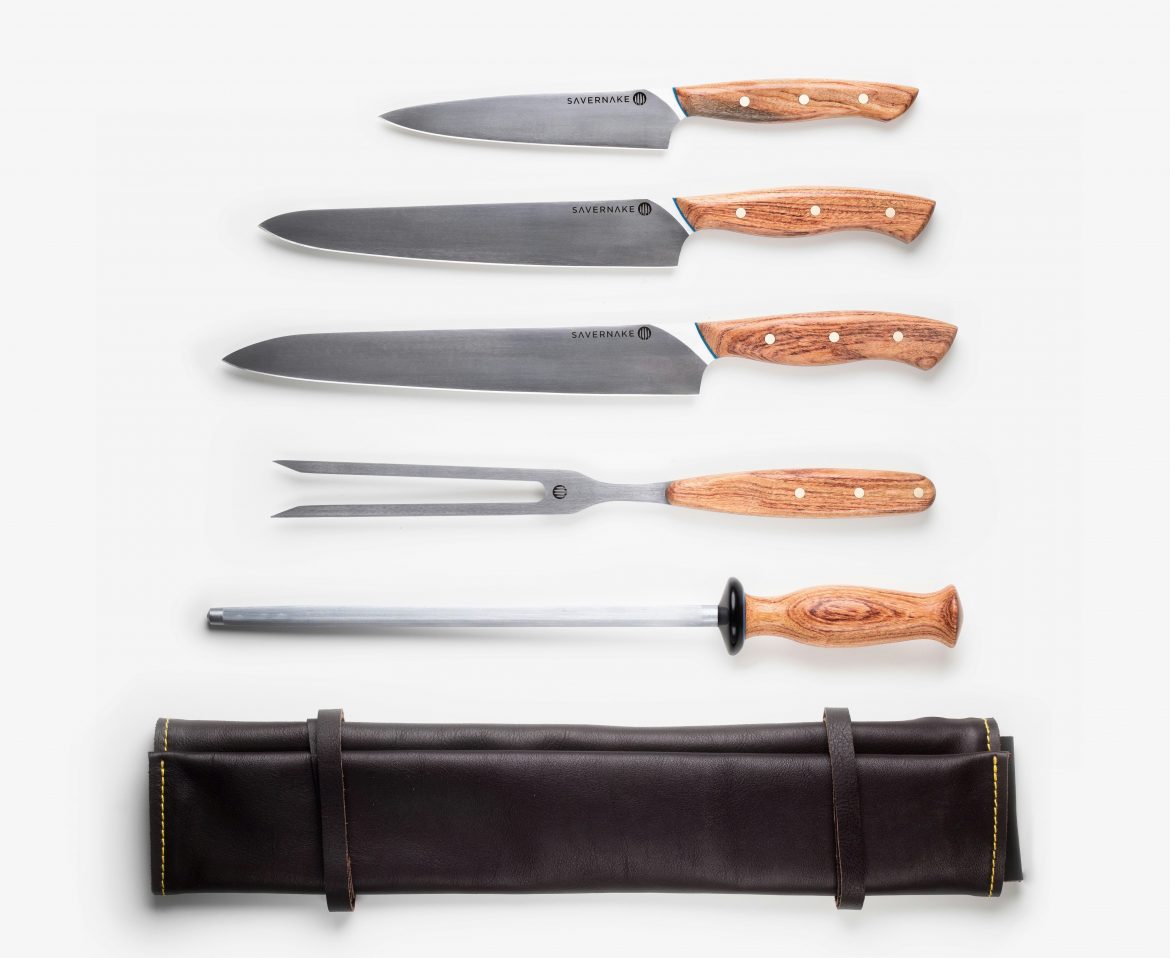Knives, knives, knives. One of the most worshipped tools in any kitchen – from humble homes to Michelin-star restaurants – knives are where the magic begins. They don’t just slice through meats and veggies; a knife is what helps cooks bring their culinary visions to life.
And choosing the right one for the job isn’t about aesthetics, but about safety and efficiency. When you understand which knives to use for different tasks, you will be able to prevent injuries, save yourself time in the kitchen, and create a truly delicious meal.
From utility and pairing knives to special cleavers and tourné knives, there’s a tool designed for any culinary task. In this knife guide, we break down the most common knives in a chef’s toolkit and explain what each is used for.
Common knives in a chef’s toolkit
A cook, no matter their level, should have a basic set of kitchen knives at their disposal. Four will already take you far. Start with a pairing knife, a chef’s knife, a bread knife, and a deboning knife. And most importantly, even though not technically a knife, a honing steel (to keep up with knife maintenance). Any extras are considered speciality blades, or nice-to-haves.
Pairing knife
It looks like a mini chef’s knife, with a small, smooth blade, measuring a total of 20 cm in length. It’s best used for preparation, like peeling, mincing small amounts of garlic and onions, coring fruits and veggies, and other intricate detailing work like creating a garnish.
It’s never used to chop, slice or dice large amounts of ingredients, and if you find yourself using it this way or applying force, swap it out for a heavier blade like a chef’s knife, to prevent injury.
Best for: Peeling, trimming, coring, segmenting, and mincing.
Chef’s knife
The most frequently used knife in any kitchen, with many forms and designs to choose from, a chef’s knife is typically between 20cm and 25cm long. It has a wide, thick base that curves and extends into a thin, sharp point – making it an extremely versatile tool to have.
The thick, wide base is strong enough for tackling harder veggies, like beets and pumpkins, and portioning meats, like chicken or lobster tails. The middle section of a chef’s knife, with a slightly thinner, curved blade, is perfect for slicing and dicing.
The last bit of the knife, or tail-end, is curved and pointed – perfect for creating a rocking motion when finely dicing, chopping, or mincing ingredients, like fine herbs, garlic, or mushrooms.
Best for: Portioning, rock chopping, slicing, dicing, julienne, chiffonade, prep
Bread knife
What makes this tool stand out is its serrated edge. This is what makes a bread knife suitable for slicing bread and cakes without ruining or squishing the crumb structure or tearing the whole thing apart.
But it doesn’t only slice bread or cakes, it’s also useful for when you want to cut foods without applying pressure, like soft fruits and tomatoes. You won’t be able to slice with precision, but you will keep the interiors of these foods intact.
Best for: Bread, cakes, soft fruits and veggies
Boning knife
This is a must-have if you like breaking down your own meats and seafood, whether that looks like portioning or removing skin, bones, and shells. It’s long and thin, which allows you to move and bend with the curves of bones or shell, helping you effectively separate the meat, with as little waste as possible.
There are two varieties: a stiff blade and a flexible blade. The stiff blade provides greater force, which is preferred when working with thick cuts of meat like beef and pork. The flexible blade is perfect for more delicate work, like removing skins and delicate bones from poultry and fish.
Best for: Removing skin and bones, and trimming meat
Honing steel
Although this tool can’t help you carve out garnish masterpieces, it is a crucial one to keep in your drawer. A honing steel helps maintain a knife’s blade, keeping it sharp. The raised surface helps reset the microscopic edge of smooth knife blades, helping to maintain their sharpness, although not being able to actually sharpen them.
Before and after prep work or a cook, hone your knives. Hold the honing steel steady in your left hand, and with the knife at a 20-degree angle, run it from the tip to the base of the honing steel on one side of the blade. Then, repeat on the other side of the blade. Do this five to ten more times.
Best for: Maintaining the sharpness of smooth blades
Every cook knows that mastery starts with the basics. And the knife is at the heart of it all. When you respect the blade, keep it maintained, and use it with intention, you’re not just cooking; you’re honing a skill that connects you to kitchens everywhere.
Also See: From grimy to gleaming: The best way to clean your knife block
From grimy to gleaming: The best way to clean your knife block
Image credits: escoffier.com

